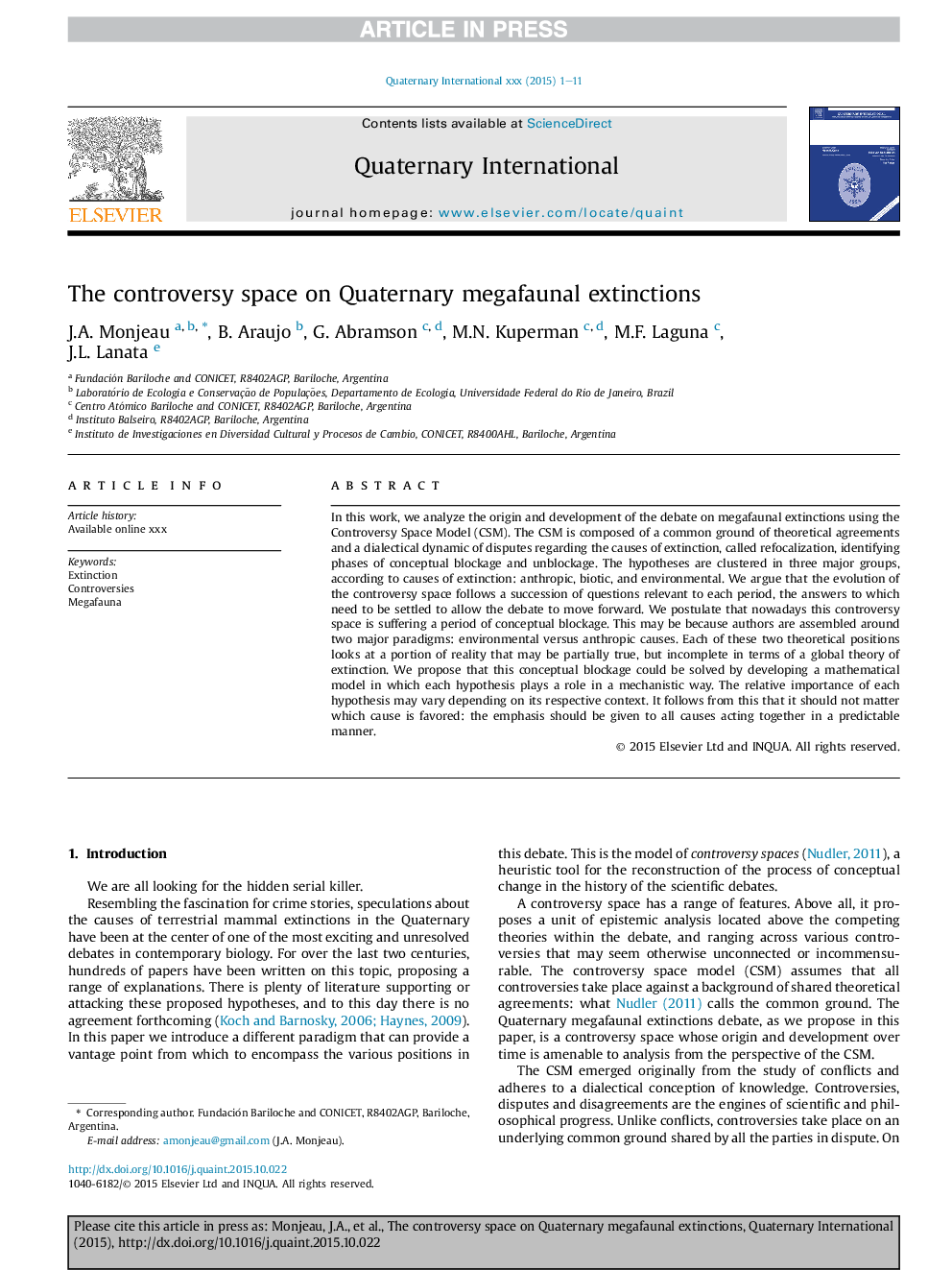| Article ID | Journal | Published Year | Pages | File Type |
|---|---|---|---|---|
| 5113753 | Quaternary International | 2017 | 11 Pages |
Abstract
In this work, we analyze the origin and development of the debate on megafaunal extinctions using the Controversy Space Model (CSM). The CSM is composed of a common ground of theoretical agreements and a dialectical dynamic of disputes regarding the causes of extinction, called refocalization, identifying phases of conceptual blockage and unblockage. The hypotheses are clustered in three major groups, according to causes of extinction: anthropic, biotic, and environmental. We argue that the evolution of the controversy space follows a succession of questions relevant to each period, the answers to which need to be settled to allow the debate to move forward. We postulate that nowadays this controversy space is suffering a period of conceptual blockage. This may be because authors are assembled around two major paradigms: environmental versus anthropic causes. Each of these two theoretical positions looks at a portion of reality that may be partially true, but incomplete in terms of a global theory of extinction. We propose that this conceptual blockage could be solved by developing a mathematical model in which each hypothesis plays a role in a mechanistic way. The relative importance of each hypothesis may vary depending on its respective context. It follows from this that it should not matter which cause is favored: the emphasis should be given to all causes acting together in a predictable manner.
Keywords
Related Topics
Physical Sciences and Engineering
Earth and Planetary Sciences
Geology
Authors
J.A. Monjeau, B. Araujo, G. Abramson, M.N. Kuperman, M.F. Laguna, J.L. Lanata,
